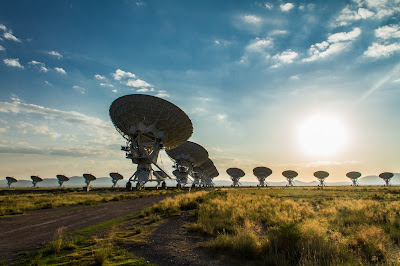A new house is being built just up the hill from ours, and last week they poured the slab on which the house will sit. I've been photographing the construction process since they started clearing and grading the land, so I thought this would be a good milestone to share photographically.
It starts with an acre of dirt and sagebrush . . .
Then come the earth-moving equipment and a water truck to keep down the dust . . .
and the requisite Porta-Potty . . .
Because this site is on a hill, the dirt is dug out to create a level area for the slab . . .
Then trenches are dug to outline the footprint of the house for a foundation . . .
. . . and to provide channels for the plumbing within the footprint area:
The interior of the footprint is smoothed out; the trenches are partially filled; and a grid of wire mesh is laid out to reinforce the poured concrete.
Then it's time to pour the concrete. The operation requires a concrete pumper truck with a large, motor-controlled boom that can deliver the liquid concrete to any part of the footprint of the house:
The pumper truck gets its concrete from the familiar transport trucks, which line up to take their turn off-loading their contents into the pumper truck.
The concrete is pumped up and over the top through a pipe attached to the mechanical boom. The flexible delivery end is managed by a single worker, and the pump and boom are controlled by a guy standing on the truck with a joystick controller (circled in the images below):

The concrete is poured in sections of a certain size to allow for finishing.
Once a section is filled, two workers with scoops shovel the concrete to make sure it's higher than the level they want it to be. Then two workers with a long piece of metal (about the size of a 10-foot long 2x4) walk backwards scraping the concrete to level it.
After this crew moves on, another worker smooths the surface with a long-handled device:
Around the perimeter, workers smooth the edges of the slab . . .
. . . and another worker inserts bolts into the concrete that will eventually anchor the walls of the house:

This process is repeated until the entire footprint of the house is filled with concrete, smoothed and finished.
BEFORE:
 |
| July 11, 2015 |
AFTER:
 |
| August 6, 2015 |
If you would like to see these images and more in a larger format, visit my photography website, Todos Juntos Photography, by clicking here.
Enjoy!


































